Rethinking the role of degrees in S’pore – is it still relevant in the evolving job landscape?

When I was growing up, getting a university degree was never a question. Throughout my primary and secondary school years, I attended numerous tuition and extra classes to supplement what I had learned in school.
The end goal of this? To secure admission to a prestigious tertiary education institution. Looking back now, my economics degree only has marginal relevance to my current job, if any at all.
It’s not to say that my university experience was entirely futile — the years I spent pursuing my degree undoubtedly equipped me with a solid foundation in concepts such as market structures and economic policies.
But when it comes to the specific knowledge and skills required for my profession, I find myself relying more on the practical experiences and on-the-job training I’ve acquired over time.
I’m not alone in this predicament, though. Across the city-state, only a mere seven per cent of Singaporeans with post-secondary qualifications feel that their educational qualifications are “very relevant” to the job they currently hold.
But given this fact, why do many still relentlessly pursue higher education certifications?
More Singaporeans possess post-secondary qualifications
The belief that education is crucial for a brighter future is deeply rooted in Singaporean society, which stems from its meritocratic system.
With good grades, you can get into a good university. With good university grades and a good degree, you can land a perfect, high-paying job. In other words, education paves the way to success in Singapore.
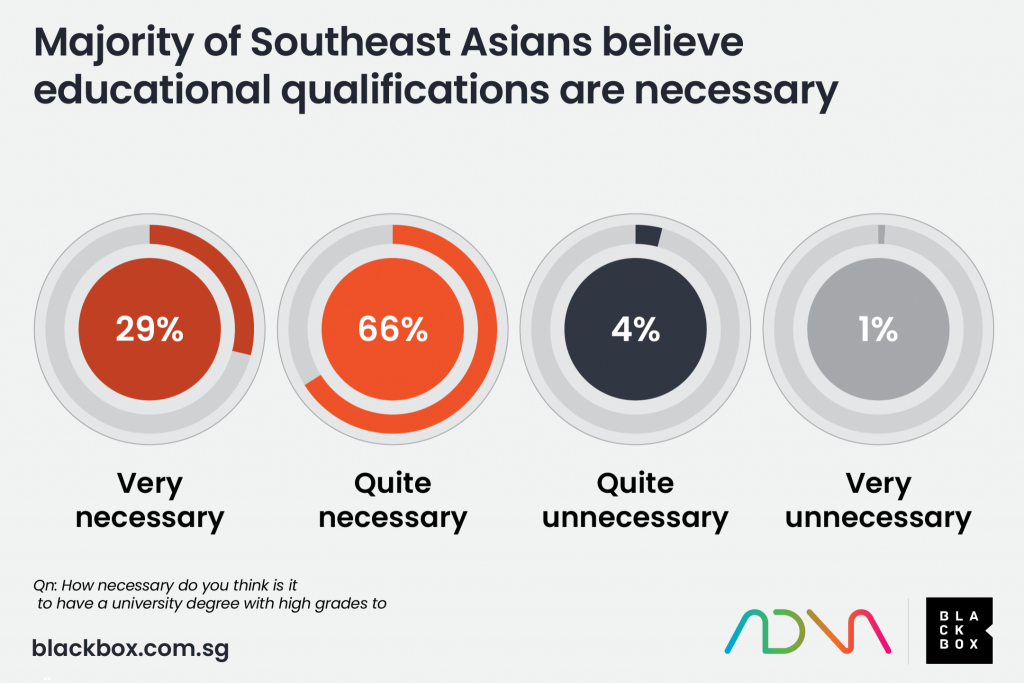
This is why many Singaporeans feel as though they are caught in a rat race from a young age, leading to a significant increase in the number of university graduates over the years.
As of 2020, nearly six out of 10 Singaporeans aged 25 and above have a post-secondary, diploma, professional qualification or university level credentials, up from less than half the population in 2010.
Notably, the largest contribution to this overall increase comes from the proportion of university graduates, which has surged by nine percentage points, rising from 23.7 per cent in 2010 to 33 per cent in 2020.
Younger age groups, particularly those aged between 25 and 34, demonstrate the highest rates of individuals with at least post-secondary qualifications, with nine out of 10 possessing such credentials. The trend continues within the 35 to 44 age bracket, where more than eight out of 10 individuals achieved the same educational milestone.
However, the perception among Singaporeans that a university degree equated to success isn’t wholly ungrounded though — that is if you tie success to the amount of money one earns.
University graduates do, in fact, earn substantially higher salaries. According to Seedly, graduates in their 20s and 30s earn a median pay that is at least more than double compared to those without higher education qualifications, as well as those from the Institute of Technical Education.
Graduate unemployment is a pressing issue
While this may be the case, an important factor to consider when examining the pursuit of higher education is the diminishing value added from a university degree as the number of graduates increases.
Take real-world cases for example — a degree can boost incomes by over 20 per cent in sub-Saharan Africa, where degrees are relatively rare, but in Scandinavia, where 40 per cent of adults have degrees, it boosts earnings by only nine per cent.
As post-secondary qualifications become commonplace, recruiters and employers will increasingly demand them, regardless if they are actually required for a specific job. This creates a situation where many jobseekers feel compelled to pursue higher education despite their career goals or interests.

At the same time, the abundant Singaporeans with post-secondary education also means that there is a high supply of jobseekers who are “over-educated” — which, in turn, leads to unemployment as the number of available jobs are not proportional to the number of job seekers.
For instance, Singapore saw an increase in graduates who remained unemployed for more than six months after leaving school, despite recording higher median salaries in 2022 as compared to the previous year.
In parallel, countries such as China are also seeing youth unemployment hitting record highs this year, with 20.4 per cent of job seekers aged between 16 and 24 unable to find work despite having higher education qualifications, with some possessing credentials from overseas institutions.
The case of the “graduate poor”
With graduates unable to secure jobs, many of them are turning to “low-skilled” jobs that offer lower salaries. Essentially, these graduates are underemployed.
According to a survey done by the Lee Kuan Yew School of Public Policy and Ong Teng Cheong Labour Leadership Institute, about 4.31 per cent of degree-holders in Singapore are severely underemployed.
These graduates earn than less than S$2,000 a month, despite holding full-time jobs. “These are the ‘graduate poor’, and it is a black swan in our labour landscape,” said Zainal Sapari, an assistant secretary-general with the National Trades Union Congress (NTUC).

Even then, for those who manage to secure a “high-skilled” job, there’s often a mismatch between their educational qualifications and job scope.
Only 13 per cent of Southeast Asians feel that their educational qualifications are “very relevant” to the job they currently hold. In Singapore, this figure was drops to a mere seven per cent — the lowest across the Southeast Asian region.
This highlights the gap between the skills acquired through formal education and the evolving needs of the job market, especially in Singapore.
Academia is not catching up with the evolving job market
The issue with academia is that it just cannot keep up with the evolving job market, especially with the rise of artificial intelligence (AI) and automation. Often times, institutes of higher education do not equip graduates with the right skills needed for the workplace.
In fact, seven out of 10 young Singaporeans are unsure or do not think the tertiary education they receive in Singapore prepares them sufficiently to join the workforce.
Six in 10 professionals in Singapore’s workforce echo the same sentiments, believing that a degree holds less importance in landing a job today, as compared to 20 years ago.
Additionally, a Harvard Business Review report finds that the correlation between education level and job performance is weak. After all, academic grades are only indicative of how much a candidate has studied.
Recognising this paradigm shift, employers are now placing greater importance on specific skillsets rather than relying solely on academic qualifications.
In Singapore, data from a LinkedIn research revealed that more companies prefer to hire candidates with technical skills (39 per cent) and transferable skills (31 per cent), over education (eight per cent) and minimum years of experience (12 per cent).
But why are skills more valuable than academic qualifications today?
AI has drastically changed the job landscape
AI tools, including chatbots such as ChatGPT, have rapidly and drastically changed the job landscape today. These tools will leave a lasting impact in various industries, disrupting the way we work.
For one, it will result in the loss of certain jobs, but at the same time, it would also be the catalyst for the creation of new jobs that require different skillsets.
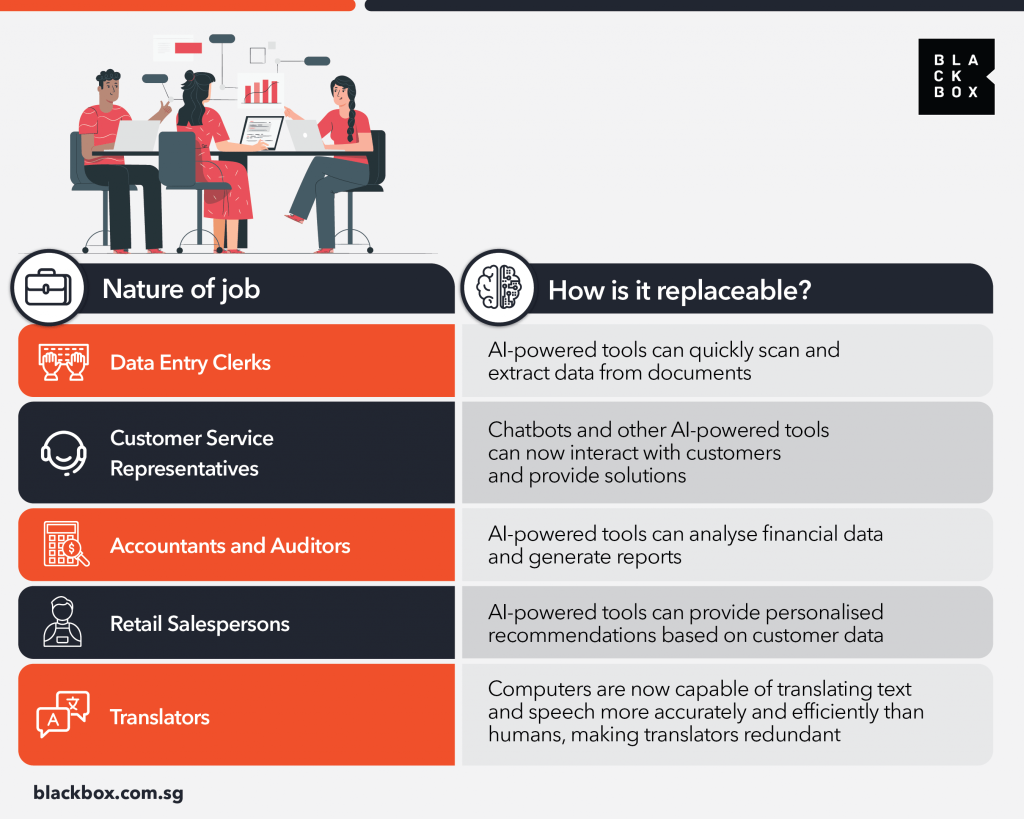
With automation replacing various job functions, its important to pick up skills that are hard for AI to replicate, such as creativity, emotional intelligence, critical thinking, and problem-solving — soft skills that require human judgement, intuition and empathy that are not easily replaceable by machines.
Automation aside, soft skills are also an essential part of improving one’s ability to work with others. The capacity to collaborate effectively with colleagues and cultivate positive relationships within a company plays a crucial role in professional growth and success.
Although the rise of AI has led to an increase in the demand for IT-related skills, an IBM study has found that the biggest skill gaps today are not digital, but behavioural.
That said, hard skills such as digital skills can still be easily picked up through various other means, instead of attending an institute of higher education. The rise of online education because of the pandemic has democratised access to hard skills, making it more accessible and affordable for individuals to acquire knowledge in various fields.
Online courses offered by reputable institutions like the Massachusetts Institute of Technology (MIT) often provide practical, up-to-date knowledge that is directly applicable to the job market in a shorter period of time, providing a lucrative alternative to degrees that costs thousands of dollars.
The importance of continuous learning
I do admit though, universities and other tertiary institutions have been upping their game to equip their students with soft (and hard) skills, but these are usually in the form of courses that span a few weeks, such as NUS’ Roots and Wings course.
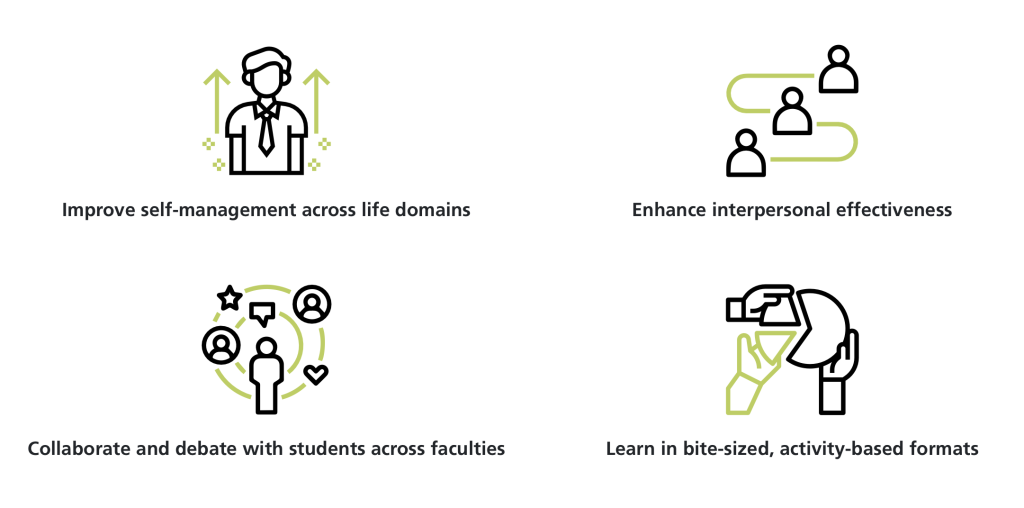
These skills definitely require knowledge, but it is really more about action — which is why hands-on experience holds greater value than just simply acquiring knowledge on these skills.
Today, 73 per cent of all professionals and young Singaporeans including Gen Zs, are prioritising skills over degrees.
But beyond acquiring the required hard and soft skills required for a job, it’s important to recognise the importance of adaptability and continuous learning as the job landscape evolves to become more complex and volatile.
In the wake of new innovations, continuous learning is no longer a choice, but a necessity. It holds the key to staying updated with the latest industry trends, acquiring new skills, and remaining competitive in the job market.
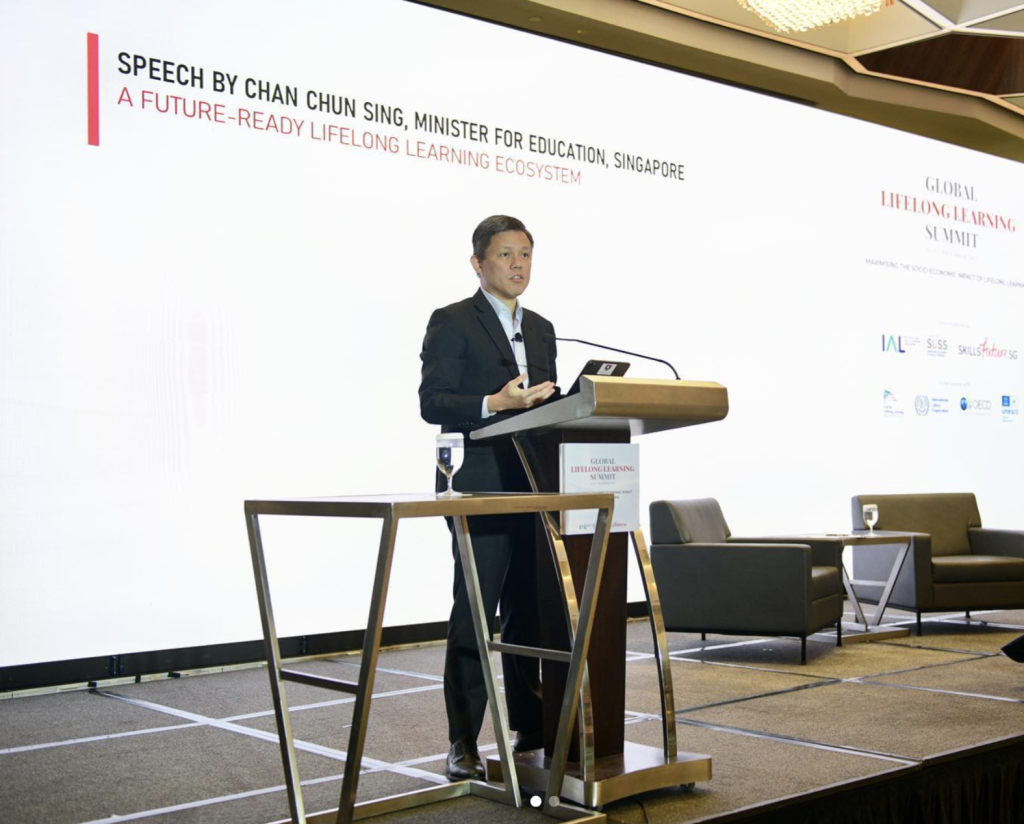
During his speech at the Global Lifelong Learning Summit last year, Singapore’s Minister of Education, Minister Chan Chun Sing, acknowledged that “no amount of front loading in [Singapore’s] school system would be adequate for the lifelong education needs of Singaporeans”.
This is why the Singapore government has upped its efforts to promote lifelong learning through initiatives such as SkillsFuture.
Degrees still have their place in Singapore
However, that is not to say that there is no value in a degree, especially when it comes to specialised fields such as medicine, finance, and law.
Degrees in such fields are often the backbone of these specialised career paths, and provide a solid foundation of knowledge and rigorous training that is essential for success and safety in these professions.
For instance, to become a Registered Psychologist in Singapore, you would not only have to complete an undergraduate degree, but also obtain a masters in the field.
While this holds true, it’s undeniable that the value of a degree has significantly deteriorated in the context of Singapore’s job landscape today.
Although institutes of higher education are adapting to this changing landscape by incorporating courses to enhance students’ workforce readiness, the pace of change remains a challenge.
The rapid evolution of the job market necessitates a comprehensive approach to education and career development, one that goes beyond traditional classroom learning and embraces continuous upskilling and real-world experience.
Featured Image Credit: pexels
Also Read: Wage transparency in S’pore: Should your colleagues know how much you earn?
From venture capital to crowdfunding, has the investment pool for crypto finally dried up?

The blockchain and crypto industry witnessed an immense growth in funding from 2017 through the start of 2022. It started off with a period now referred to as the ICO (initial coin offering) boom, wherein companies raised funds by issuing their own crypto tokens.
As per Crunchbase, an estimated US$4.9 billion was raised through ICOs in 2017 alone. Investors were enticed by the potential for high returns, with tokens often gaining significant value post-offering. The trend spiralled quickly and soon, fraudulent projects became commonplace.
Once it became clear that these returns weren’t sustainable and a majority of projects were seen bailing on their commitments post-ICO, the bubble burst and led to a market crash. A study published by Statis Group would later reveal that over 80 per cent of ICOs launched in 2017 had turned out to be scams.
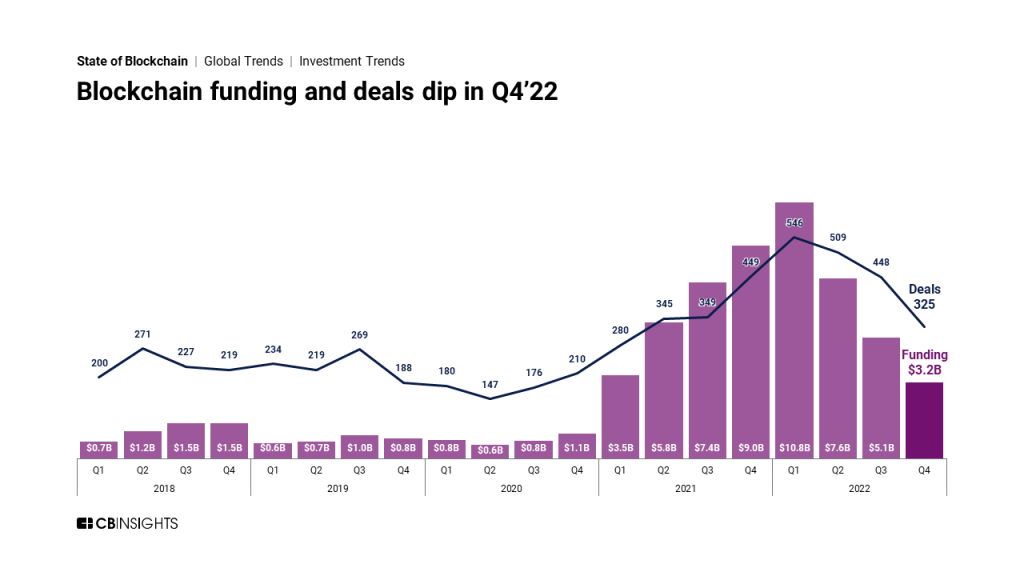
Even with this setback, the interest for crypto projects remained intact. After a lull period following the market crash, venture capital (VC) funding began picking up steam. Starting the second quarter of 2020, VC funding towards blockchain projects increased for seven consecutive quarters, peaking at US$10.8 billion in Q1 2022.
Then, disaster struck once again. The crash of Terra Luna – at the time, the third largest crypto ecosystem behind Bitcoin and Ethereum – wiped out US$50 billion from the crypto markets within three days. Along with this, it brought back the same sentiments of fear and distrust which defined the industry after the ICO bubble burst.
Later in the year, the collapse of crypto giants such as FTX worsened these issues, bringing crypto funding to a grinding halt. Today, the industry is still reeling from the setback with only US$500 million raised by VCs through the first five months of 2023.
Is crypto funding gone for good?
AI has claimed the top spot as tech’s buzzword of the year and even with the crypto markets recovering, blockchain no longer seems to draw the attention it once did. It stands to reason whether hype was, in fact, the primary factor behind crypto’s half-a-decade of dominance.
In Singapore – long known to be a crypto-friendly jurisdiction – regulators have furthered their stance of protecting retail consumers. The use of crypto as a speculative investment is discouraged, and the Monetary Authority of Singapore (MAS) only sees benefit in blockchain use-cases which solve real-world problems.
A KPMG report from 2022 revealed that although the FTX and Terra Luna crash had turned investors away from crypto, there was still demand for other blockchain-based innovations. Use-cases such as real-time settlement and tokenisation, which can help improve existing financial systems, have seen growth led by companies including Ripple and StraitsX.
Over in Dubai – a region quickly emerging as a global crypto hub – a similar view is echoed.
“The funding landscape has evolved significantly following the crypto winter,” says Belal Jassoma, Head of Business Development at the Dubai Multi Commodities Centre. “We’ve seen the market mature. The noise of hype-fuelled and speculative projects has been filtered out.”
A healthier crypto industry
Investors have undergone a change in mindset, now valuing aspects such as the long-term sustainability of a crypto project. This was often overlooked during previous market cycles when investments were largely driven by prevailing trends.
“We’ve seen more demand from institutional investors, banks, and hedge funds. Asset managers are allocating more of their portfolio to crypto and Web3 projects. That has helped the industry as well,” Jassoma adds.
As regulations have shaped up around the world, there has been an increase in confidence among institutional investors. Real-world use-cases have become more common and even risk-averse investors have started to give blockchain a serious thought.
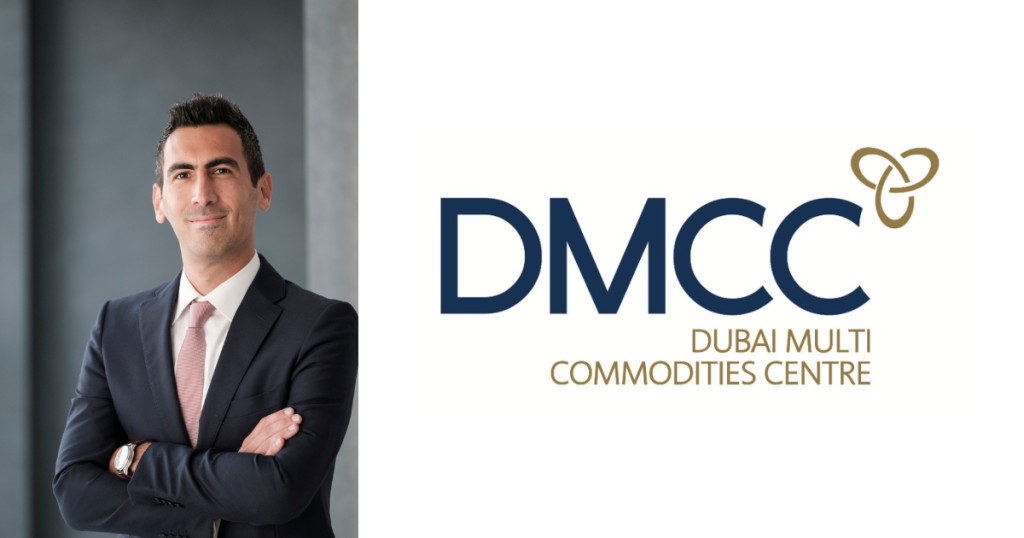
Crypto may no longer be trending on social media but among businesses, there seems to be a renewed interest in blockchain technology following the crypto winter. Regulators and governments are helping support this through public-private partnerships and incentives for blockchain innovation.
In Singapore, MAS has regularly engaged in collaborations with industry players through the Project Guardian initiative. Established in May 2022, the project was recently expanded to test the potential of tokenisation across a wider range of financial asset classes.
In Dubai, the DMCC crypto centre has been looking into ways through which blockchain can help improve trade. “We want to foster the adoption of this tech by our mainstream sectors like commodities, energy, and precious metals and stones,” Jassoma says.
DMCC plays an active role in helping companies secure funding and ensuring that investments flow into worthwhile projects. “VCs like to work with us because we give them access to a curated deal flow. Companies established in DMCC go through a complete due diligence performance and that gives more confidence to investors.”
All things considered, blockchain technology is still well and alive, albeit with a new face. It’s no longer represented by speculative cryptocurrencies and high-risk investments, but rather, applications which can help improve real-world systems and processes.
Featured Image Credit: CryptoSlate
Also Read: E-commerce meets crypto: GM.co founder speaks about the demand for crypto payments
BIG Pharmacy to acquire competitor Caring Pharmacy for RM900mil with plans to IPO

BIG Pharmacy Healthcare Sdn Bhd (BIG Pharmacy) will be acquiring Caring Pharmacy Group Bhd (Caring) from 7-Eleven Malaysia (7-Eleven) for RM900 million, The Edge reported on July 21.
Backed by Malaysian private equity firm Creador, BIG Pharmacy was the third highest bidder for Caring, sources told The Edge.
The two other main bidders were US-based private equity fund, Carlyle Group, and Luxembourg-based investment advisory firm CVC Capital Partners.
The Edge wrote in October 2022 about Carlyle Group’s interest to acquire Caring, having been at the “advanced stage of negotiation”. Sources said that the US-based group had made a RM1.3 billion offer for Caring, but 7-Eleven was seeking between RM1.5 billion and RM1.8 billion.
Negotiations with both Carlyle Group and CVC Capital Partners were said to have fallen through, The Edge reported.
Thus, emerging as the winner was the next-in-line, BIG Pharmacy.
Who’s caring about Caring Pharmacy?
Founded in 1994 by five pharmacists who were university friends, Caring was bought by 7-Eleven in 2020 for RM292 million. Prior to that, Caring had been publicly traded on Bursa for six years before 7-Eleven voluntarily delisted it.

7-Eleven has a 75% stake in Caring, with the remaining held by investment holdings company Motivasi Optima Sdn Bhd, The Edge reported.
The convenience store operator’s sale of the pharmacy may not come as a surprise, as Bloomberg reported that it had been contemplating the decision since July 2022.
At the time, CGS-CIMB Research found that such a move could boost the convenience chain’s earnings-per-share in FY23-24.

This was assuming the company receives cash proceeds of RM1.3 billion, and pares down its debts completely.
The possible sale of Caring Pharmacy has driven up 7-Eleven’s shares by 7 sen to RM2.20 at the time of writing, after hitting a high of RM2.29 this morning.
BIG Pharmacy’s big plans
Established in 2007 by couple Lee Meng Chuan and Lim Sin Yin, BIG Pharmacy got its start in Damansara Uptown.
Lee and Lim collectively have a direct stake of 15% in the pharmacy chain and also an indirect stake of 40.22% via holdings company Uptown Paradise Sdn Bhd, The Edge wrote.
According to The Edge, BIG Pharmacy has plans to launch an initial public offering (IPO).
To be able to list an IPO, a company must first meet quantitative and qualitative criteria. That may explain why BIG Pharmacy is actively expanding its stores ahead of the planned IPO.
The acquisition of Caring may be one way for it to expand.
Both Caring and BIG Pharmacy are some of the biggest pharmacy chains in Malaysia, with 282 BIG Pharmacy outlets across Malaysia, and Caring with a total of 199 outlets as of March 2022.
The consolidation of pharmacies (whereby larger chains acquire smaller retailers) seems to be commonplace in Malaysia’s pharmacy scene.
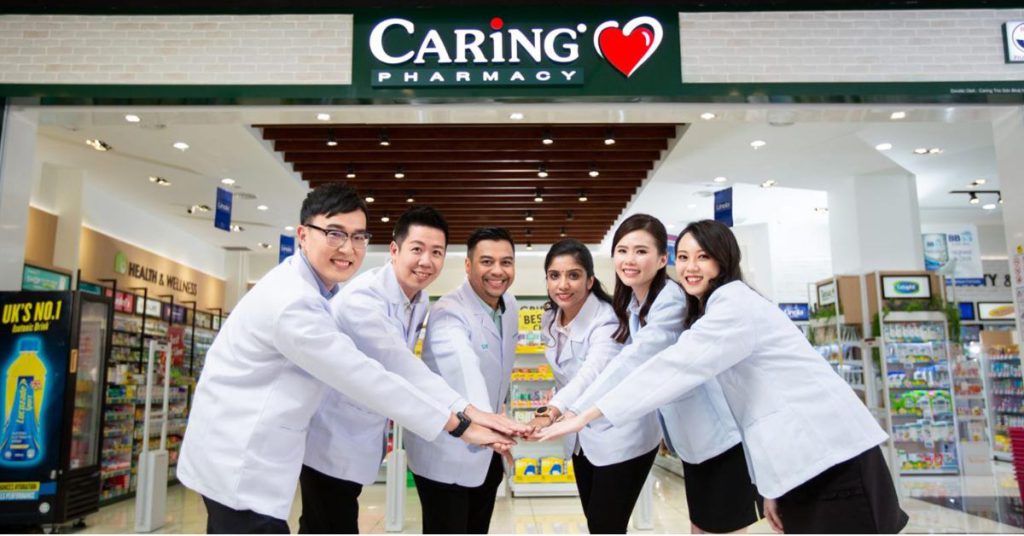
For one, Caring’s growth in recent years has been thanks to acquisitions of smaller chains such as The Pill House Pharmacy Sdn Bhd and Willings Pharmacy Sdn Bhd.
Similarly in 2018, Creador had merged its retail pharmacy chain, RedCap Pharmacy, with BIG Pharmacy, renaming all the stores to BIG Pharmacy.
Creador now has a 35.03% stake in BIG Pharmacy, held through Iris Pallida Sdn Bhd.
The private equity firm’s founder and CEO Brahmal Vasudevan told The Edge back in 2019 that firm was “actively looking for targets”, referring to existing industry players to take over.
The latest target is Caring, of course. It’s unclear whether Caring will continue to operate as an independent brand, or if it will rename all stores to BIG Pharmacy.
At the time of writing, the transaction between 7-Eleven and BIG Pharmacy has not been officially announced, but is expected to be made as soon as today.
- Learn more about BIG Pharmacy here.
- Learn more about Caring Pharmacy here.
- Read other articles we’ve written about Malaysian startups here.
Also Read: SMEs, this 2-day KL conference will reveal strategies on how you can use AI for your biz
Featured Image Credit: BIG Pharmacy / KK Ang
SMEs, this 2-day KL conference will reveal strategies on how you can use AI for your biz
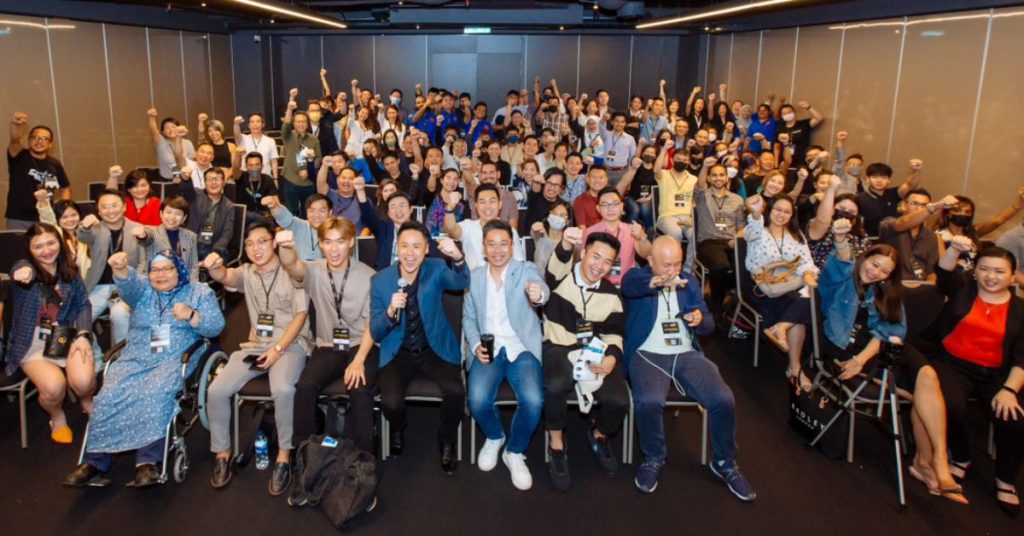
[This is a sponsored article with Owners Circle.]
Since the launch of ChatGPT last November, artificial intelligence (AI) development has been kicked into overdrive.
Tech giants, from Google and Microsoft to TikTok’s parent company ByteDance, have been investing heavily in AI-powered systems such as chatbots and content discovery algorithms.
Understandably so, small business owners may mistakenly believe that AI exclusively benefits large enterprises. They may also be hesitant to adopt AI as they lack deep technical expertise.
That’s according to Jonathan Quek, who founded Owners Circle, a company that provides SMEs with tools and business coaching services to help them scale.
To give SME owners insights into how they too can leverage AI in their businesses, Owners Circle is hosting a two-day conference called Business Growth Summit 2023: The AI Revolution.
Sign-ups are now open, and the summit will be held August 3-4, at the Cheras North International Convention Centre (CNICC).

Uncover the potential of AI for your small business
“In response to market opportunities that will arise in 2023, we understand that the real challenge lies not in being replaced by AI, but in being surpassed by businesses that effectively leverage AI,” Jonathan stated.
“While developing advanced AI models and algorithms may require specialised skills, there are user-friendly AI tools, platforms, and pre-built solutions available that do not necessitate deep technical expertise.”
That’s exactly what the Business Growth Summit 2023 intends to expand on, so you can get inspired and learn how to adopt AI for your business processes.
You’ll get to hear about real-life case studies of how other Malaysian business leaders from various industries have made AI work for their companies.

Kicking off the conference on Day 1, Jonathan will take the stage with his opening speech on how your business can use AI to generate leads and drive sales conversions.
Owners Circle’s Chief Growth Officer, Raymond Chou will follow up with his talk that will shine a light on AI’s hidden potential that could help make you a better visionary leader in your company.
Other speakers will expand on topics like “Blue Ocean Strategy In The Age of AI” as well as “How AI Is Revolutionalising Small Business Accounting”.
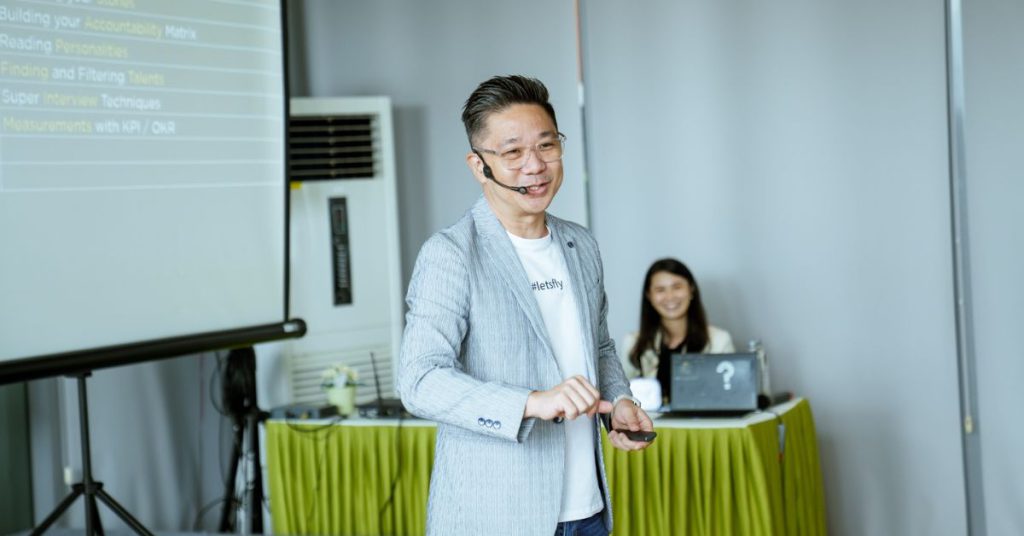
Hear the stories and strategies of notable business leaders
To support SME owners who may be struggling with declining sales, the conference has brought together a lineup of experienced business leaders. They will share valuable insights on navigating the ever-changing business landscape.
These entrepreneurs are no strangers to Vulcan Post either, as they include names like Timothy Tiah, co-founder of the luxury Malaysian coworking space brand Colony.
He will be joined by Kelvin Long, who heads a creative branding agency and local retail brand called APOM, which is known for its ballsy designs inspired by Malaysian humour.
Beven Tan, Country Manager of SHOPLINE, an ecommerce platform for merchants to create their own online shop, will also be present at the summit to share their insights on SME digitalisation.
By learning from their strategies, you’ll gain the necessary understanding to seize market opportunities for the rest of 2023.
Learn how to take advantage of existing tools in the market
At the end of the day, having insights about AI’s possibilities for your business might be futile if you don’t have the tools to apply that knowledge.
Hence, the Business Growth Summit 2023 is also hosting representatives to showcase some AI tools in the market that can boost your business’s efficiency and productivity.
One of these tools is Microsoft’s Copilot, a generative AI assistant to help you and your team automate tasks like creating documents, reading and summarising emails, crafting presentations, and more.

Microsoft Malaysia’s Partner Technology Strategist, Wilix Hong will demonstrate how using Copilot can help your company automate repetitive and time-consuming tasks. This can free up your employees’ time to focus on higher-value activities.
-//-
If you’re looking to gain insights on how you can strategically leverage AI for your SME’s growth, you can purchase your tickets to the Business Growth Summit 2023: The AI Revolution starting from RM199 here.
Ultimately, it is important for small businesses to assess their specific needs and objectives to identify areas where AI can have the most significant impact.
While adopting AI may require initial investment and trial and error, the potential benefits could be substantial for your company’s efficiency, customer satisfaction, and competitive edge.
- Sign up for Business Growth Summit 2023: The AI Revolution here.
- Read about other AI-related articles here.
Also Read: Early-stage startups, here’s how you can get a cut of RM36K from Sidec’s 2023 accelerator
Featured Image Credit: Owners Circle
Wait, these restaurants in M’sia aren’t halal? We look into why Muslims still flock to them.
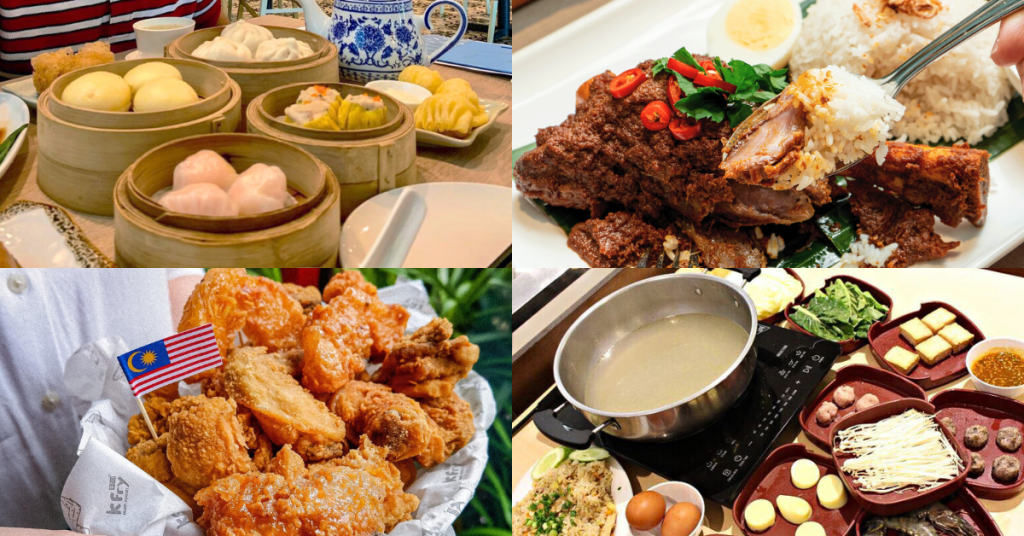
Recently, I was told by a colleague that Madam Kwan’s, the well-known restaurant serving “Truly Malaysian Cuisine”, is not actually certified halal. And neither do they claim to be so.
You can’t find any mentions by the brand of it being halal-certified on its website or Facebook page. Yet, my colleagues and I have observed that Malaysian Muslims are still frequent patrons of its 16 establishments around the country.
The same can be said for some locally popular restaurants, like Johnny’s Restaurant, K Fry, and Dolly Dim Sum. All have a good base of loyal customers despite lacking in the halal certification department.
Yes, these well-established eateries don’t actually have halal certification as some sites have claimed, and each with its own reasonings.
Although, K Fry’s website stated that the chain is in the process of commencing its halal certificate application. It also clarified that their ingredients are sourced from halal-certified suppliers.
As of 2022, Dolly Dim Sum still seems to serve alcoholic beverages on a separate menu at their premises, which may be why they can’t be halal-certified since alcohol is forbidden in the religion.
However, Dolly Dim Sum does source from halal-certified suppliers, as reported by Have Halal Will Travel back in 2019.
Editor’s Update: Information in the above paragraphs have been edited to reflect greater accuracy.
In Madam Kwan’s case, a Facebook page dedicated to F&B with the halal logo shared that the brand had previously replied to a comment explaining they served poultry and meat that are JAKIM compliant.
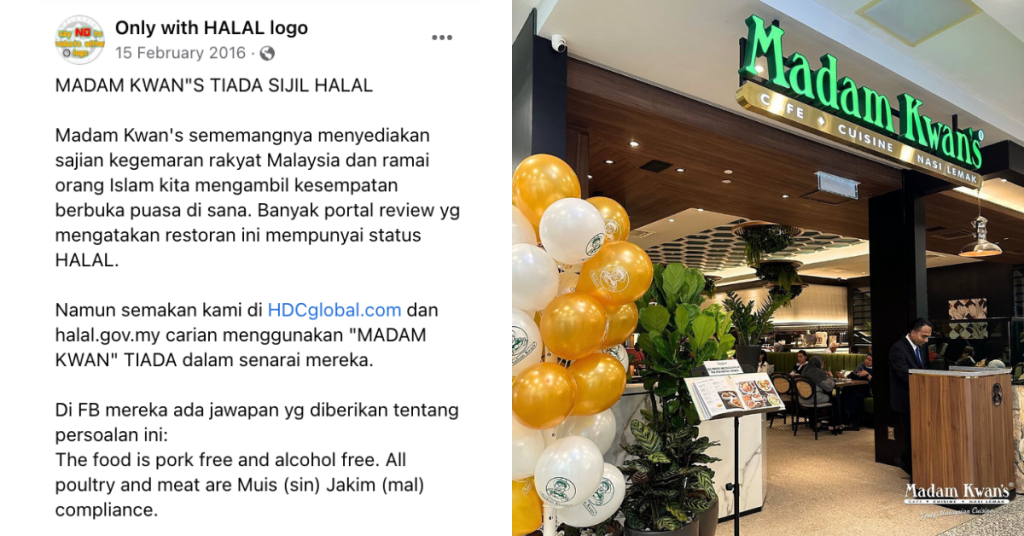
We did our own digging to find the original Madam Kwan’s post, but unfortunately came up empty-handed. That said, we found a new comment on this Facebook post where the brand clarified that all its ingredients are sourced from halal suppliers.
As mentioned in our halal explainer, obtaining halal certification is not as simple as serving halal meat.
Many factors actually come into play into it, including having a minimum number of Malaysian Muslim employees in the food processing area, ensuring that staff undergo a Halal Awareness Training programme, having a strategic layout plan in place, and more.
A netizen shared in 2019 that a server at Johnny’s Restaurant told him that the premise was not halal certified as its kitchen staff were Nepalese, which meant that they already didn’t meet one important requirement for certification.

Considering that the local Muslim population is reportedly 63.5% in Malaysia, it’s quite interesting to see how the above restaurants have remained a staple selection for them despite their lack of halal certification.
But it also begs the question of how—how is it that despite not having the coveted certification from JAKIM, these eateries have managed to attract and host the many Muslim customers we’ve observed?
They say strategic locations are important
One theory could be due to the placement of these restaurants. Just by looking at the four eateries listed out above, you would find that they are most commonly found in shopping malls.
All of these restaurants can be found mostly nestled in high-traffic areas where there are stores like Cotton On and Parkson. Rarely do you see them as a standalone outlet outside of a mall.
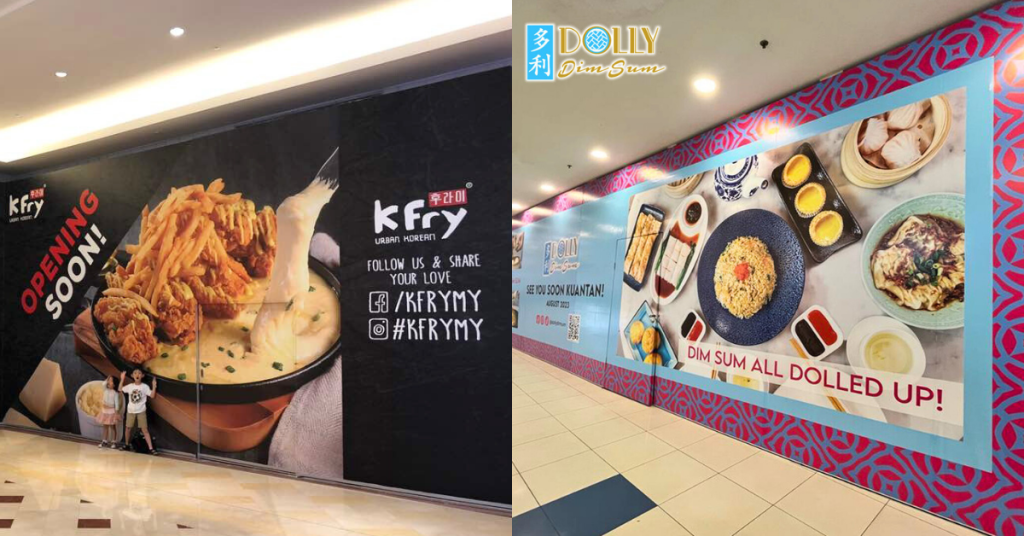
And looking for actual halal-certified eateries at large malls in the city isn’t easy, at least from my experience.. Most of the options tend to be fast food chains like McDonald’s and KFC.
I don’t believe fast food is something you would want (or should want) to have every day. Food courts are another alternative as well for those that want a variety of cuisines. But it’s not the best spot for a family meal, especially when said family is large in size.
Imagine trying to dine at a food court with a family of eight. Isn’t it just chaotic and unpleasant, not to mention having to separate from one another? I would say so.
With a restaurant serving halal meat, at least families can actually dine together and have proper food.
The kind of food served plays a role too
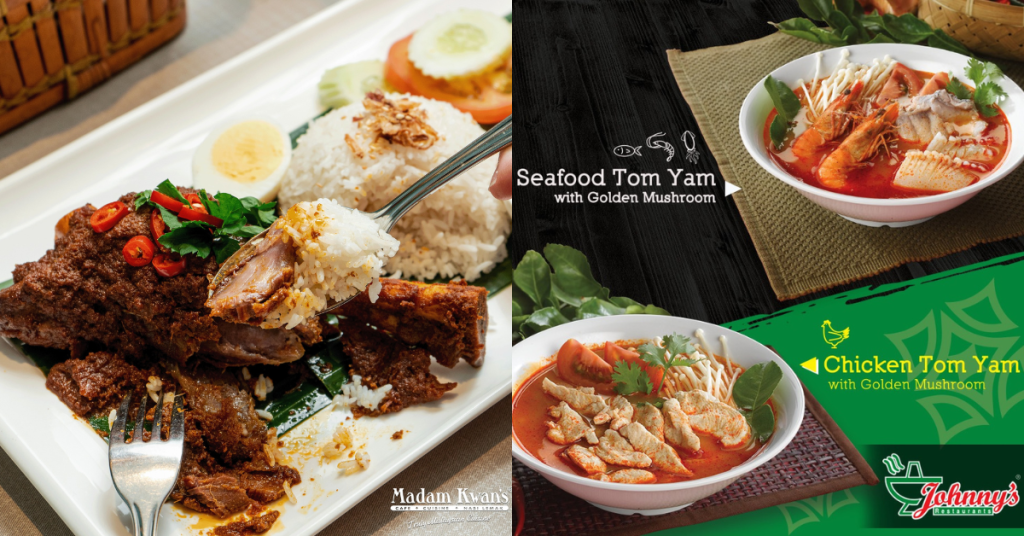
Another aspect to consider is the kind of food being served at these restaurants. From my experience, not everyone is big on Western dishes, which a lot of halal fast food places tend to offer. Some of us prefer the comfort of the food we grew up eating.
Madam Kwan’s slogan “Truly Malaysian Cuisine” sums up their menu of cuisine from different cultures in Malaysia, making the brand an easy go-to for many families, including Muslim ones. Sepiring is a halal-certified contender in this area, but it opened long after Madam Kwan’s had already found its way into the hearts of Malaysians.
Meanwhile, Dolly Dim Sum serves dim sum without the use of pork, lard, or alcohol, which enables the Malay Muslim crowd to enjoy Chinese cuisine, such as fried rice, congee (porridge), and cheong fun.
(Other popular options include halal-certified Mohd Chan, but their restaurants are typically found outside of malls, and halal-certified DIN by Din Tai Fung seems to have fewer outlets across malls in Klang Valley.)

Johnny’s satisfies our love for Thai food and steamboat, which typically have pork as an ingredient in many dishes.
Smart marketing moves that appeal to the Muslim crowd
Perhaps what has also helped the above brands draw in a notable Malay Muslim crowd is their marketing strategies.
K Fry, Madam Kwan’s, and Dolly Dim Sum have engaged Malay influencers or models to create content for their social media in the past, which adds to the brands’ credibility of being trustworthy Muslim-friendly restaurants.

Additionally, Dolly Dim Sum has even showcased its Malay employees in some of its social media posts, further giving customers peace of mind that their food is indeed pork-free and lard-free.
Some of these brands have also curated Ramadhan specials for buka puasa and Raya, which welcomes Malays to come and dine in their restaurants.
-//-
All that said, the restaurants mentioned above have not been misleading the public by saying they’re halal-certified when they aren’t.
In my opinion, they’ve simply found a formula that worked to highlight their Muslim-friendly cuisine. And it’s important to note that choosing which establishment to dine at is solely the consumer’s responsibility.
If you’re unsure of a restaurant’s halal credentials then a quick look into JAKIM’s database should clear any doubts.
Ultimately, it’s admirable to see how food is able to bring Malaysians together regardless of race or religion, and options like these brands only widen the choice of food that we can enjoy together.
- Read articles we’ve written about Malaysian startups here.
Also Read: Early-stage startups, here’s how you can get a cut of RM36K from Sidec’s 2023 accelerator
Featured Image Credit: Dolly Dim Sum / K Fry / Madam Kwan’s / Johnny’s Restaurant
S’pore startup raises US$3 million for ChatGPT-powered AR monocle from Oculus, Siri founders

In a gradually more competitive space of AR/VR devices, one Singapore-based startup decided to go small — very small — and developed a single augmented reality glass that you can mount over your eyewear, to provide you with useful information on the go.
While it surely will not be in competition with Apple’s upcoming Vision Pro — priced at a whopping US$3,500 upon its launch next year, and promising a fully immersive experience with a blend of AR and VR — you can already buy Brilliant Labs‘ Monocle for just a tenth of the price of its much larger relative.
Yes, the device isn’t some sort of a nebulous Kickstarter promise that you will have to wait years of broken promises for, but you can purchase it today for US$350 on the company’s website which doubles as a store.
Given its advanced stage, it is perhaps not such a big surprise that it attracted interest from high-profile Silicon Valley investors, including Oculus co-founder Brendan Iribe, Siri co-founder Adam Cheyer, and Pebble founder Eric Migicovsky; collectively raising US$3 million in its seed round announced last month, which it is planning to use to develop its second wearable.
The Raspberry Pi of AR
In its basic form, the Monocle is quite rudimentary for most users at this point.
It is equipped with a 720 pixel camera, a microphone and a touch sensor, using Bluetooth for communication and currently offers only one hour of battery life (though it comes equipped with a charging case carrying up to six charges more).

But while you could use it on a daily basis to interface with ChatGPT on the go, seeking information and receive it instantly right before your eyes, the real purpose of the device at this point is rapid prototyping for thousands of tinkerers, programmers, hobbyists and hackers, coming up with all sort of real-life applications.
In one such example, presented shortly after the sales launch in February, a San Francisco-based 22-year-old Computer Science major, Bryan Chiang, created his own version of an AI assistant, dubbed RizzGPT, as it is supposed to provide the user with a boost in social situations.
Through the built-in microphone, it actively monitors the ongoing conversation and provides on the fly suggestions of appropriate responses:
Based on ChatGPT and Whisper, OpenAI’s speech recognition system, it may appear very basic at this point, but it’s exactly the sort of a prototype that the AR monocle is enabling now — before more sophisticated products can enter the market in the coming years.
To that end, the Brilliant Labs’ Monocle is not powered by a traditional processor and doesn’t run an operating system as such, like you would find in modern smartphones or IOT devices.
Instead, it is powered by an FPGA (field-programmable gate array) — a circuit that can be completely reprogrammed at will.
Traditional processors have their internal logic “baked” into them at the production stage. Meanwhile, FPGAs, while more expensive to manufacture and not as powerful computationally, allow for total customisation of that logic to serve very specific purposes. This, again, makes them an excellent choice for prototyping.
This customisation process is made easier thanks to Monocle’s use of StreamLogic — a no-code, drag-and-drop FPGA programming environment, which takes the burden of coding away and helps product developers to focus on testing new functions very rapidly.

In many ways, the Monocle is like Raspberry Pi, once an educational project revolving around very basic, small, modular computer boards, which has outgrown its original purpose with time.
Within a decade, it has become enormously popular not only with hobbyists assembling their own devices, but found practical use in other fields including robotics, industrial applications, monitoring of other hardware and machinery, or even consumer products like smart home devices or small computers.
The hope behind the Monocle (and, presumably, its successors) is that it is going to similarly grow beyond its initial limitations and become the backbone for development of hundreds of different solutions for consumers and companies alike.
This is why, thanks to the handsome capital injection, we should hear more about Brilliant Labs in the coming years.
Featured Image Credit: Brilliant Labs
Also Read: The fastest flop in history? Data shows that Threads’ popularity crashed in just one week
E-commerce meets crypto: GM.co founder speaks about the demand for crypto payments
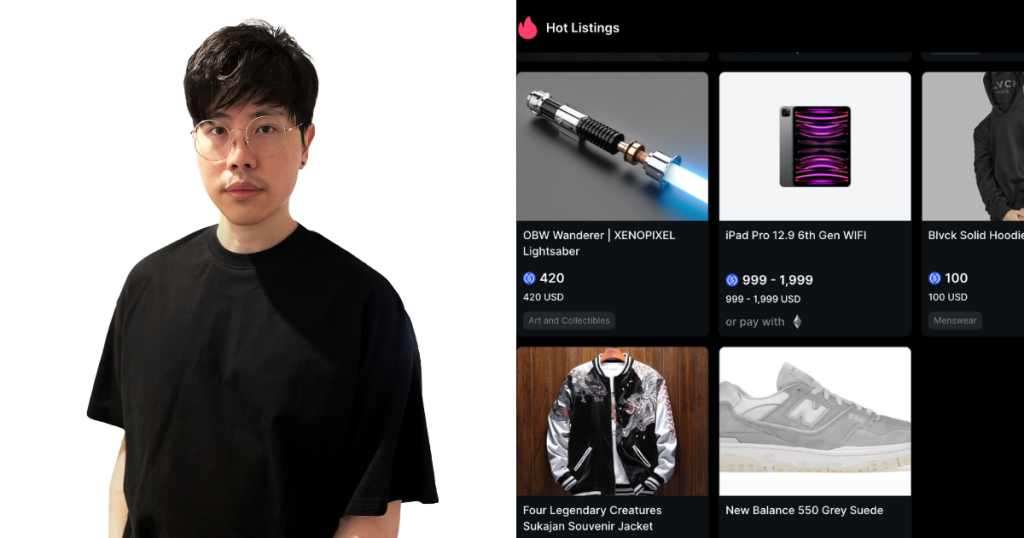
As a mode of payment, cryptocurrencies have enjoyed limited use. Beyond digital assets such as NFTs and the occasional retail merchant, there aren’t too many avenues for people to spend their coins.
In late 2021, the founders of GM.co set out to change this. “We were heavily involved in this space at the time and saw a real need for people to transact using crypto,” says CEO and co-founder Julian Chow.
With the bull market well underway, there was a lot of money flowing into crypto at the time, but a lack of real-world use-cases. For many, crypto was more a speculative investment than an actual currency.
The vision for GM.co was crowdfunded through the PxN: Ghost Division NFT project, a collection of 10,000 avatars, granting holders access to future rewards and benefits.
NFTs in the collection were initially bought for as much as 2ETH, which was worth around US$5,000 at the time. To date, the collection has recorded over US$90 million in secondary sales volume, as per the current price of ETH.
We wanted to build and foster a community organically. Our NFT collection serves as a common point to tie everyone together — kind of like a membership token. Today, the holders are part of our community. They gave us feedback and were our first beta testers and users [for GM.co].
– Julian Chow, co-founder, GM.co
Over the past year and a half, GM.co has taken shape as a blockchain-based marketplace for a variety of products and services. The name itself is a play on words — an acronym for the phrase “goods meet crypto” — breaking down the fundamental idea behind the business.
Online shopping with crypto
When it first launched in March 2023, GM.co was a very barebones website. The most problematic was the issue of transaction fees — it could cost users as much as $12 to simply make a purchase using Ethereum.
This was a commonly accepted fee in NFT marketplaces, but it simply wouldn’t fly for an e-commerce platform selling physical products.
On traditional marketplaces like eBay, transaction fees are negligible, and that’s the bar GM.co had to strive for. The team devoted a lot of their initial efforts to optimising these costs and have since brought them down by over 80 per cent. Today, making a purchase on GM.co using crypto can cost as little as a dollar.
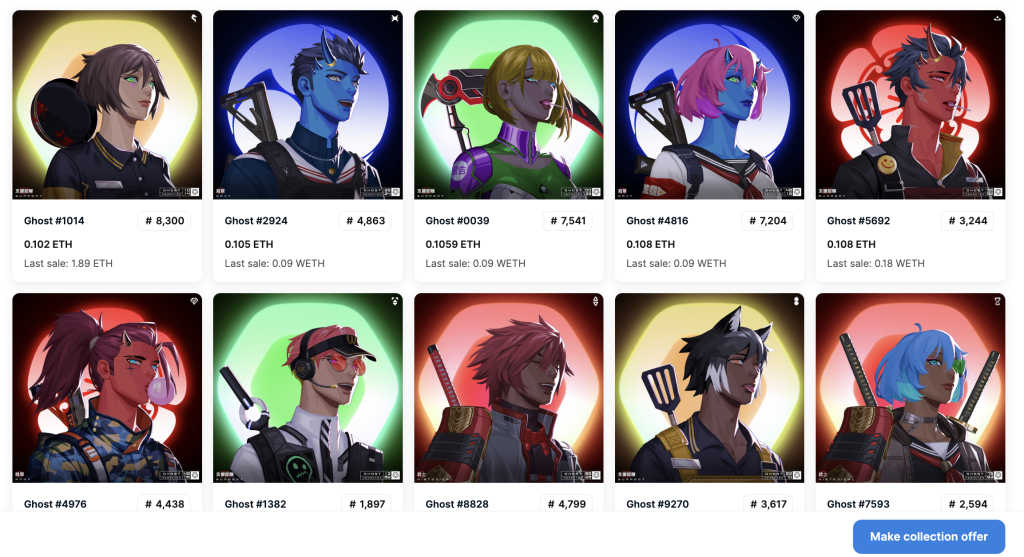
“We have a little over 1,000 listings right now,” says Chow. “It includes a variety of things from sneakers and collectibles like Pokemon cards to jewellery, clothing, and electronics.”
Naturally, collectibles are the primary driver of the marketplace for now — given that the platform has its roots embedded in an NFT project. However, the team does envision it expanding in the future.
We want to have this platform open for all kinds of goods and services. But finding success in a small niche first isn’t necessarily a bad thing. As a strategy to grow, we want to focus on the areas which our audience will find most interesting.
– Julian Chow, co-founder, GM.co
What sets GM.co apart?
Beyond the novelty of using crypto for payment, it stands to reason whether there’s an actual need for such a platform. Chow believes the blockchain technology can help build trust and legitimacy in an online platform.
“A lot of times — [on platforms like eBay and Alibaba] — there is an epidemic of fake reviews. You can buy a hundred reviews for like 50 dollars. This is very disingenuous and makes [the listings] hard to trust,” says Chow.
In contrast, a platform like GM.co benefits from the transparency which blockchain provides. Every transaction is publicly recorded and red flags are easy to spot.
If we see 100 newly created [crypto wallets] buying from a person and giving them five stars, we can very easily identify that as problematic behaviour and flag reviews as questionable or fake.
– Julian Chow, co-founder, GM.co
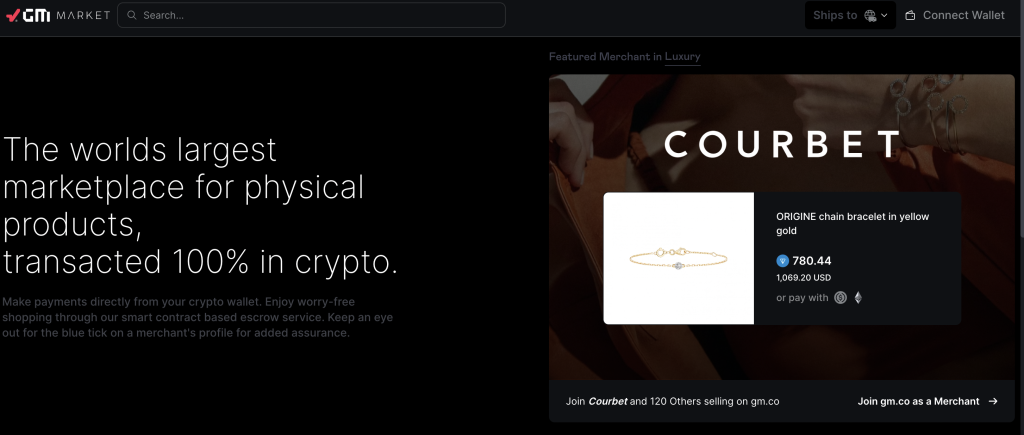
Blockchain also allows for a preferable dispute resolution process, wherein money isn’t held by a third-party, but rather a smart contract until a transaction is complete.
“We have an escrow feature which holds the money in a decentralised contract on the Ethereum blockchain,” explains Chow. This makes it easier to recover funds in case a product isn’t delivered as per expectations.
Finally, as crypto adoption grows, a platform like GM.co gives users a wider range of options to make use of their holdings. It removes the need to convert crypto back into fiat when making real-world purchases.
“There’s just a lot of people with cryptocurrencies with nowhere to spend it and this is a way to give them an outlet.”
The future of GM.co
Chow envisions GM.co as one of the main players in the crypto P2P commerce space. With crypto spending on the rise, he wants to help lead the market and develop the social commerce experience which crypto is commonly associated with.
“We don’t want to just be selling commodities. We want to tap into the community spirit and attitude which crypto holders and builders tend to have.”
Through new retail experiences — for example, physical products being accompanied by digital collectibles — Chow hopes to explore ways through which brands can better connect with their consumers.
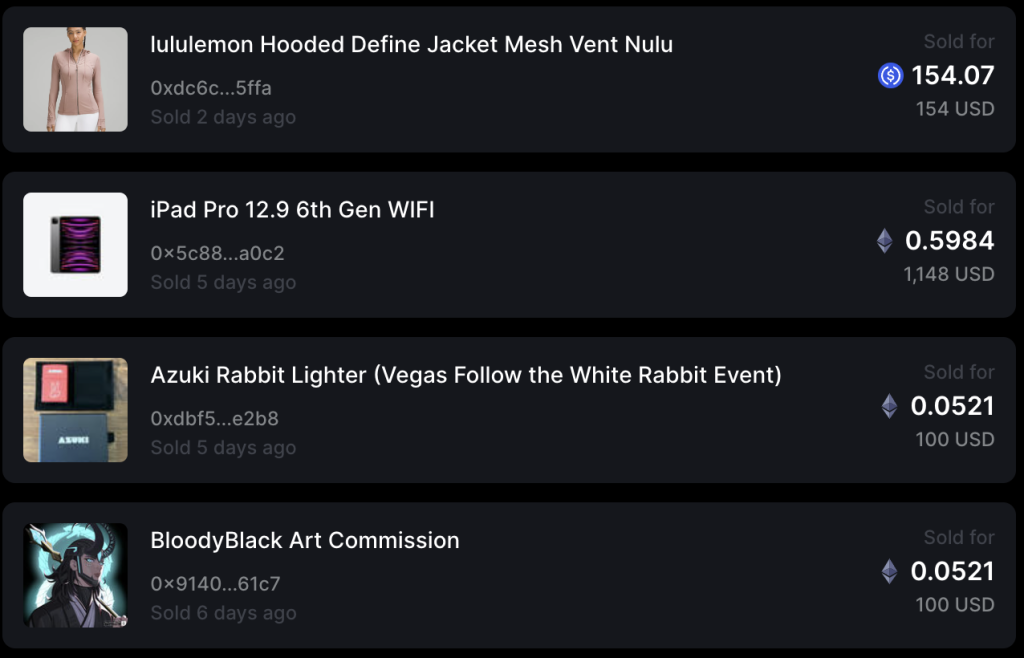
With a five-year plan in mind and the current bear market seemingly at its tail end, GM.co looks to be set for the future. The company has a remote team — with almost half the members residing in Singapore — and a headquarters set up in Dubai.
Although the company had considered Singapore for its headquarters, Chow believes that the regulatory sentiment was a bit too uncertain for their liking.
“It was a little more bureaucratic than we would have liked. In Dubai, they’re very friendly and their stance has been open. It’s more stable for us to be headquartered there and know that we won’t have to change locations in the next three to five years.”
Featured Image Credit: GM.co
Also Read: How this S’pore AI startup is transforming the marketing sector by automating content creation

